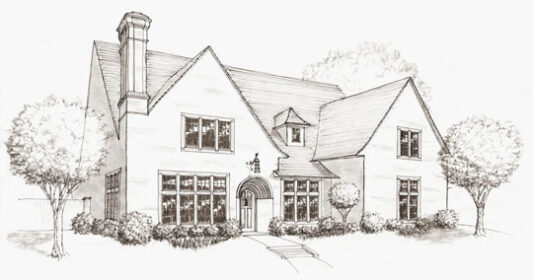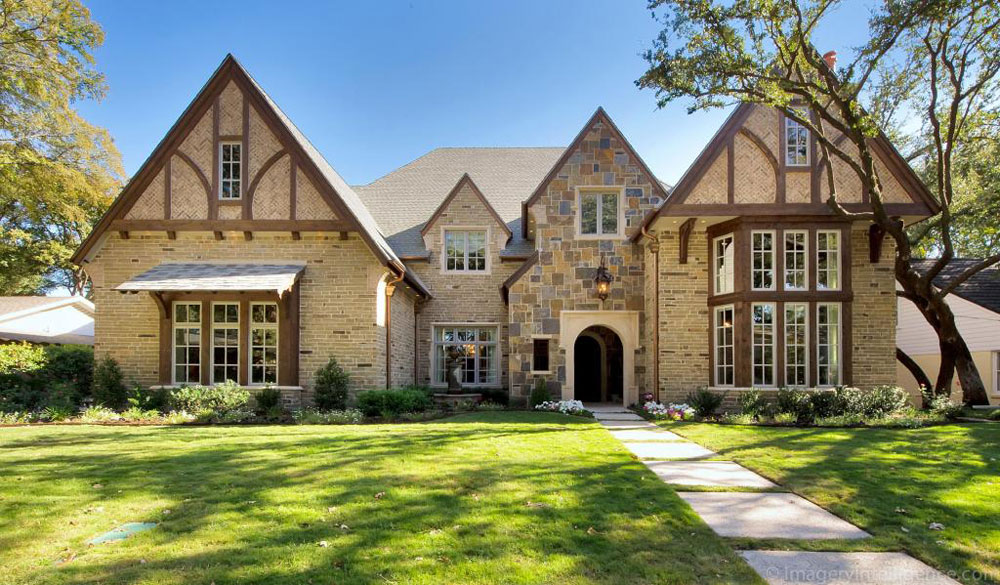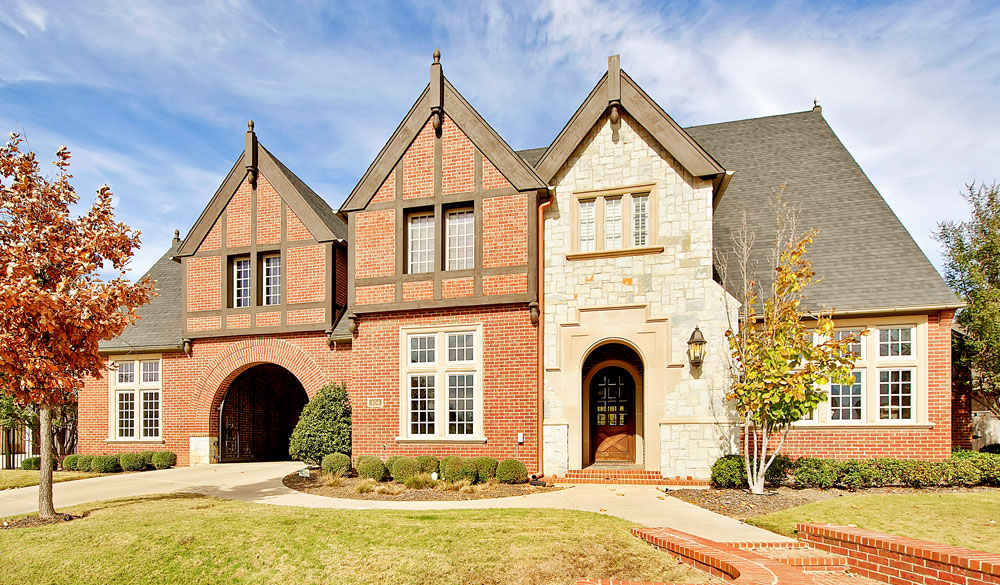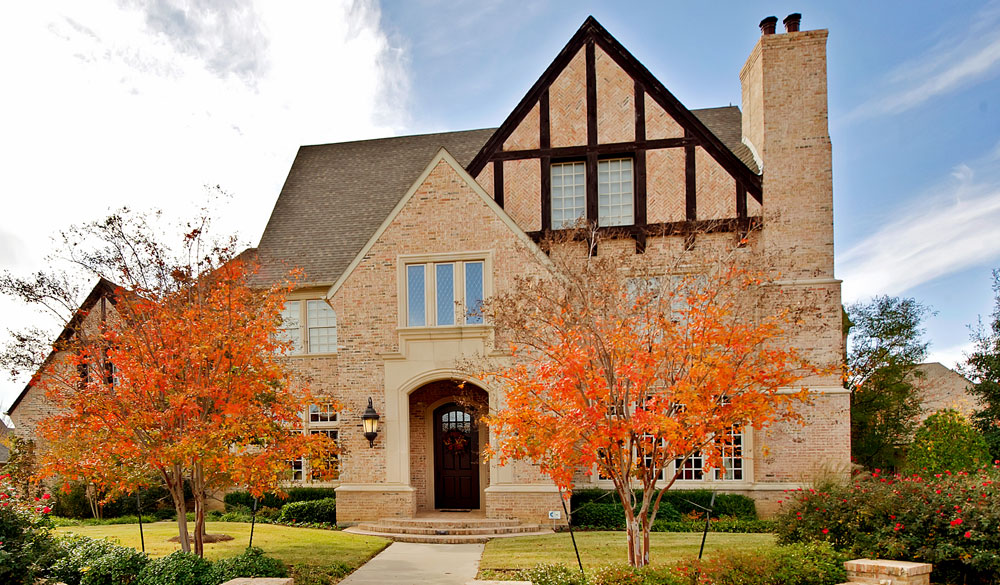
ENGLISH
ENGLISH ARTS & CRAFTS
The Arts and Crafts movement began in England in the mid 1800s as an opposing philosophy to the industrial manufacturing process that was taking jobs away from the craftsman. They believed that the artisan and craftsman should be allowed to express their creativity, and that every part of a home should add to it’s aesthetic beauty as a whole. The movement greatly influenced many architects, including Sir Edwin Lutyens, C.F.A. Vossey and A.H. Mackmurdo (to name a few).
The craftsman of the medieval era, who built by hand impressive cathedrals and palaces of their era, were used as archetypes for the new expression; and so many of the architectural forms closely resembled the characteristics of the Tudor Revival movement, (though there was a great deal more expression in the detailing). The movement gained popularity and spread across Europe and made it’s way to America by the early 1900s. While the philosophy remained the same, the architecture evolved, merged with Japanese influence, and became the roots of what we now call the Craftsman style in America.
TUDOR REVIVAL
This style is based on a romantic re-envisioning of historical England, blending Medieval buildings with Renaissance details. The earlier examples in America date back to the early 1890s, and became extremely popular following WWI. Many varieties were produced during this period as the style spread across the country, and it was common for it’s characteristics to vary geographically. The term “Tudor,” however, is somewhat inaccurate as the style draws much more heavily on architecture produced during the Elizabethan and Jacobean eras of England’s history, and not the Tudor period (as the name implies). The style fell out of favor post WWII, but has seen a resurgence in popularity since the 1970s.
SHINGLE
The Shingle style is one that represents a relatively narrow time frame (1880’s thru 1900) and a fairly specific region of the country- coastal New England. Many of these homes were summertime vacation homes of the wealthy, and were designed by significant architects of the era. Trendsetting for it’s time, the style did spread across the country, though it greatest concentration remained in the areas of Newport, Cape Cod, Maine and eastern Long Island.
CHARACTERISTICS
English Arts and Crafts architecture was based mostly on the overall characteristics of medieval English architecture, but re-envisioned it into something new. The nature of the movement allowed for a greater freedom of expression, and thus each architect brought his own creativity to it’s evolution. Vossey was known for his simple, straight rooflines, large curving bay windows, sloped corners and simple white stucco exteriors. Lutyens explored asymmetrical gables, double and triple “joined” gables, oversized and deeply recessed arches and half timbering. Despite these variations, they all generally shared the main characteristics of the Tudor Revival Style: Steeply pitched roofs, dominant front facing gables, oversized chimneys, and tall, narrow, multi paned windows grouped together. True examples of the style in America are fairly rare, though in the right circles, it does have quite a following.
Contact Us







